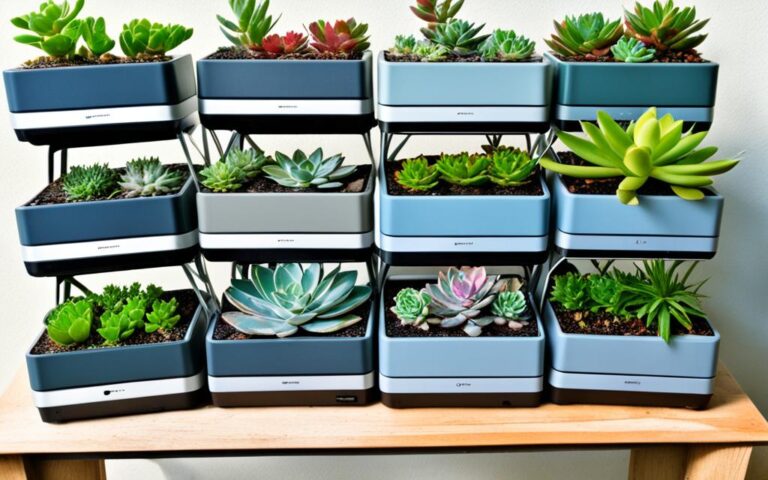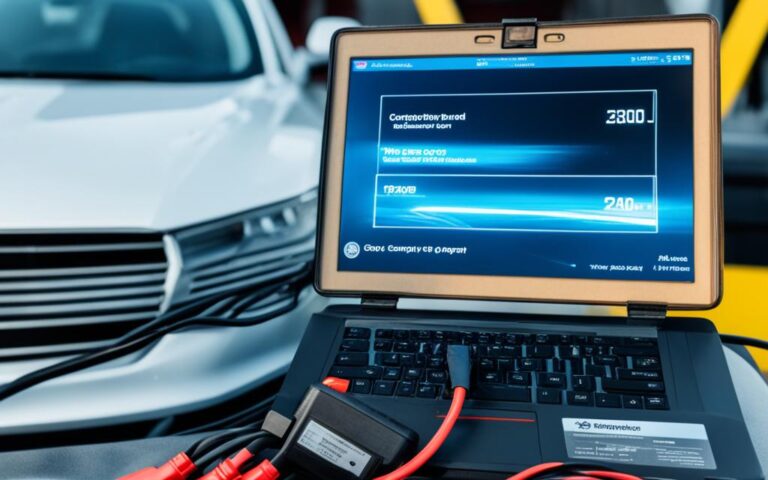Disposing of computer monitors the right way is crucial for keeping our environment safe. Computer monitors, especially the old cathode ray tube (CRT) ones, contain harmful substances like lead. The newer liquid-crystal display (LCD) screens have mercury in their fluorescent bulbs1. These substances make monitors a big part of e-waste, which is bad for our planet if it ends up in landfills2.
Recycling is the best way to get rid of old computer monitors without harming the environment2. This method stops monitors from reaching landfills and makes sure they are disposed of properly. Programs like Basel Action Network’s e-Stewards and Sustainable Electronics Recycling International’s R2 Standard make sure recycling is done right1.
Stores like Staples and Best Buy are at the forefront of recycling computer monitors1. Staples started this in 2007 and Best Buy in 20081. They take both CRT and LCD monitors at their drop-off points, making it easy for us to recycle1. But, some places might not take CRT monitors because they are harder to take apart1.
If your monitor and CPU are together, treat them as one item for recycling1. Make sure to remove all cables and your personal data before recycling. To make moving it easier and to avoid injury, use a dolly or a rolling chair1. You can find out where to take your monitor for recycling and more information by visiting websites like Earth911 and R-tt1.
Key Takeaways:
- Computer monitors have dangerous substances like lead and mercury, making them a major part of e-waste1.
- Recycling is the top choice for disposing of old monitors in an eco-friendly way2.
- Shops like Staples and Best Buy offer options for recycling both CRT and LCD monitors1.
- Getting the monitor ready and taking it to recycling properly is important1.
- For finding where to recycle and learning about the process, websites like Earth911 and R-tt are helpful1.
The Growing Issue of E-Waste
E-waste is becoming a big problem in our tech-filled world. Tech items like computer monitors are progressing quickly. This leads to more electronic waste. This waste can harm our environment and health if not thrown away correctly. Recycling electronics is key to solving this problem.
In 2016, the globe saw 49 million tons of e-waste3. By 2021, it might hit 57 million tons. In the US, 10 million tons of e-waste were recorded in 2012. That’s over 64 pounds per person. Sadly, only 20% of the $64.6 billion in recyclable materials was recycled. The rest ended up in landfills.
Almost 250 million computers will be outdated in the next five years worldwide4. The US will see about 250 million computers become outdated too. Getting rid of this massive amount of e-waste is a big challenge.
Computer monitors have harmful parts, like cathode ray tubes with lots of lead. If not disposed of properly, they can pollute our water, soil, and air. This bad e-waste management harms our health and the planet.
Some progress in dealing with e-waste has been made. Big organizations and governments, like the European Union and the United Nations, are trying to improve things. For example, the EU is working to recycle more e-waste for a better future.
We all need to take care of our electronic waste. By recycling, we lessen environmental damage. We can also get back valuable materials5. This can save a lot of money every year.
By facing the e-waste challenge and acting, we move towards a greener future. Let’s recycle, support good e-waste laws, and spread the word. Doing so helps our planet and saves resources for the next generations.
Data References:
- 3 In 2016, the world generated 49 million tons of e-waste, predicted to increase to over 57 million tons by 2021.
- 4 By 2016, the world was generating approximately 44.7 million tons of e-waste annually.
Responsible Computer Monitor Recycling
To get rid of old computer monitors properly, it’s important to recycle them the right way. This helps protect the environment and saves valuable materials. Here’s how to do it right:
1. Check if the Monitor is Working
First, see if your monitor still works. If it does, think about giving it away or selling it. This can help someone else and reduce waste.
2. Recycling Broken Monitors
If your monitor is broken, recycling is your best bet. Places like Recycle Technologies6 take old electronics. They know how to recycle them safely, keeping harmful stuff away from nature.
3. Prepare the Monitor for Recycling
Before recycling, disconnect everything and pack the monitor carefully. This keeps it and the people recycling it safe.
4. Recycling Options
You have a few choices for recycling your monitor. Here are some:
- Drop-off at a Recycling Facility: Search for a nearby place that accepts electronic waste. Many have special spots for electronics. Just take your monitor there when they’re open.
- Mail-in Recycling Programs: Some groups let you send electronics by mail. They might give you a pre-paid label or instructions on how to send it.
5. Responsible Disposal Process
The process of recycling a monitor has several steps:
- Drop-off: Take your monitor to the right place.
- Pre-processing: Workers check it and decide how to recycle it best.
- Disassembly: They take the monitor apart to sort the pieces.
- Sorting Components: Materials like plastic, metal, and glass are sorted for recycling.
In the end, recycling helps find new uses for things like plastic and metals. It even finds a bit of gold6. This way, we don’t need to dig up new resources as much6
So, recycling your old monitor is key to helping our planet. It reduces waste and saves important materials. By choosing to recycle, we’re making a real difference for the future.
Conclusion
Recycling computer monitors is vital for keeping our environment clean and reducing e-waste. We generate millions of tonnes of electronic waste every year. It is the quickest growing waste stream worldwide7. Recycling helps us recover important materials like plastics, glass, and metals from our old monitors7. By doing so, we use fewer new resources, which cuts down on carbon emissions and helps the planet7.
Today, only 15-20% of e-waste gets recycled, which is quite low7. But, we can change this by learning and practicing better recycling habits. Recycling isn’t just good for Earth; it also supports a circular economy. This means we get to reuse resources, easing landfill pressure. Plus, recycling e-waste can be worth over $62.5 billion each year7.
It’s vital to properly care for our computer screens and keyboards too. Using soft microfiber cloths and distilled water for cleaning can make them last longer8. We should steer clear of harsh chemicals that could harm both the devices and our planet8. This way, we save money and lessen the e-waste we create.
Our world produces over 2 billion tons of waste annually, with this number expected to rise sharply9. Most businesses contribute to this, but around 75% of their waste can be recycled9. Using technology like solar compactors and recycling apps can transform waste management. These tools offer info on recycling centers and what can be recycled9. By adopting these practices, we can significantly lower our waste and protect our environment.
FAQ
Why is it important to properly dispose of computer monitors?
It’s vital to dispose of computer monitors the right way to protect the environment. CRT monitors contain lead, and LCDs have mercury. These substances are harmful. Recycling stops them from going to landfills.
What percentage of total waste does e-waste, including computer monitors, account for?
E-waste, including monitors, makes up more than 33% of all waste. As technology advances, we replace our gadgets often. This leads to a lot of e-waste.
What can happen if computer monitors are improperly disposed of?
Not disposing of monitors properly can harm the environment and health. It pollutes air, soil, and water. Both nature and people face risks from these toxins.
What should I do with my computer monitor if it is still working?
If your monitor still works and is in good shape, think about donating or selling it. That helps someone else and keeps the monitor in use longer.
What should I do if my computer monitor is broken?
Recycling is best for broken monitors. Look for a recycling facility like Recycle Technologies. Remove all cables and wrap the monitor safely. You can take it to the site or mail it in.
Why is recycling computer monitors essential?
Recycling helps us handle monitors in a sustainable way and cut down on e-waste. It allows us to recover valuable materials like plastics and metals. This reduces the need for new resources and lessens environmental harm.
How does responsible recycling contribute to a greener future?
Responsible recycling helps ensure monitors are disposed of right, aiding our planet. It means less waste in landfills, saving resources, and cuts down on pollution. This way, we fight against e-waste issues and protect the environment.
Source Links
- https://earth911.com/recycling-guide/how-to-recycle-computer-monitors/ – How to Recycle Computer Monitors
- https://www.r-tt.com/technology-articles/dispose-computer-monitor.html – How to Safely Dispose of a Computer Monitor
- https://news.climate.columbia.edu/2018/08/27/growing-e-waste-problem/ – What Can We Do About the Growing E-waste Problem?
- https://www.ewaste1.com/solutions-e-waste-problems/ – Top Solutions to E-waste Problems | Great Lakes Electronics Blog
- https://getrepowered.org/blog/the-growing-challenge-of-e-waste-what-can-we-do-about-it/ – The Growing Challenge of E-Waste — What Can We Do About It? | Repowered
- https://www.recycletechnologies.com/how-to-dispose-of-a-computer-monitor/ – How To Dispose Of A Computer Monitor? | Recycle Technologies
- https://en.wikipedia.org/wiki/Electronic_waste – Electronic waste
- https://www.webmd.com/a-to-z-guides/cleaning-your-computer-screen – How to Clean Your Computer Screen
- https://www.rts.com/blog/smart-waste-management-technologies/ – 6 Smart Waste Management Technologies Emerging in 2024 | RTS


















